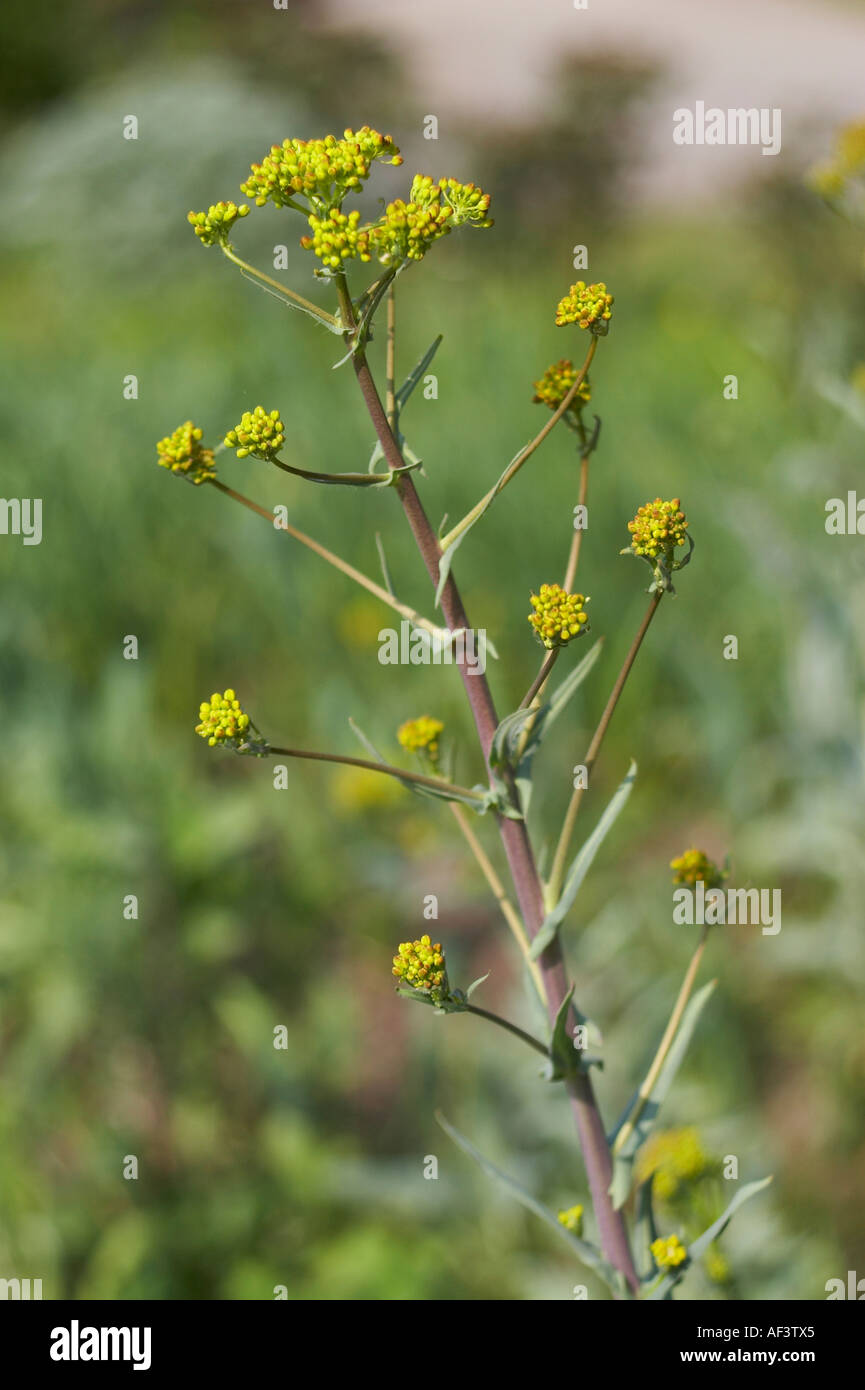Resedaceae. Reseda luteola. Mignonette. Weld

Image details
Contributor:
Piotr & Irena Kolasa / Alamy Stock PhotoImage ID:
AF3TX5File size:
52.6 MB (1.2 MB Compressed download)Releases:
Model - no | Property - noDo I need a release?Dimensions:
3498 x 5256 px | 29.6 x 44.5 cm | 11.7 x 17.5 inches | 300dpiMore information:
Mignonette (Reseda) is a genus of fragrant herbaceous plants native to the Mediterranean region and southwest Asia, from the Canary Islands and Iberia east to northwest India. The species include annuals, biennials and perennials, and grow to 40-130 cm tall. The leaves form a basal rosette at ground level, and then spirally arranged up the stem; they can be entire, toothed or pinnate, and range from 1-15 cm long. The flowers are produced in a slender spike, each flower small (4-6 mm diameter), white, yellow, orange, or green, with four to six petals. The fruit is a small dry capsule containing several seeds. Other common names include Weld (R. luteola), Bastard Rocket and Sweet Reseda. Propagation is by seed, which is surface-sown directly into the garden. The plant resents transplanting and should not be moved after sowing. Mignonette flowers are not especially attractive but are extremely fragrant. It is grown for the sweet ambrosial scent of its flowers. It is used in flower arrangements, perfumes and potpourri. A Victorian favourite, it was commonly grown in pots and in window-boxes to scent the city air. It was used as a sedative and a treatment for bruises in Roman times. The volatile oil is used in perfumery. A yellow dye can be obtained from R. luteola. Charles Darwin used R. odorata in his studies of self-fertilised plants, which he documented in The Effects of Cross and Self-Fertilisation in the Vegetable Kingdom.